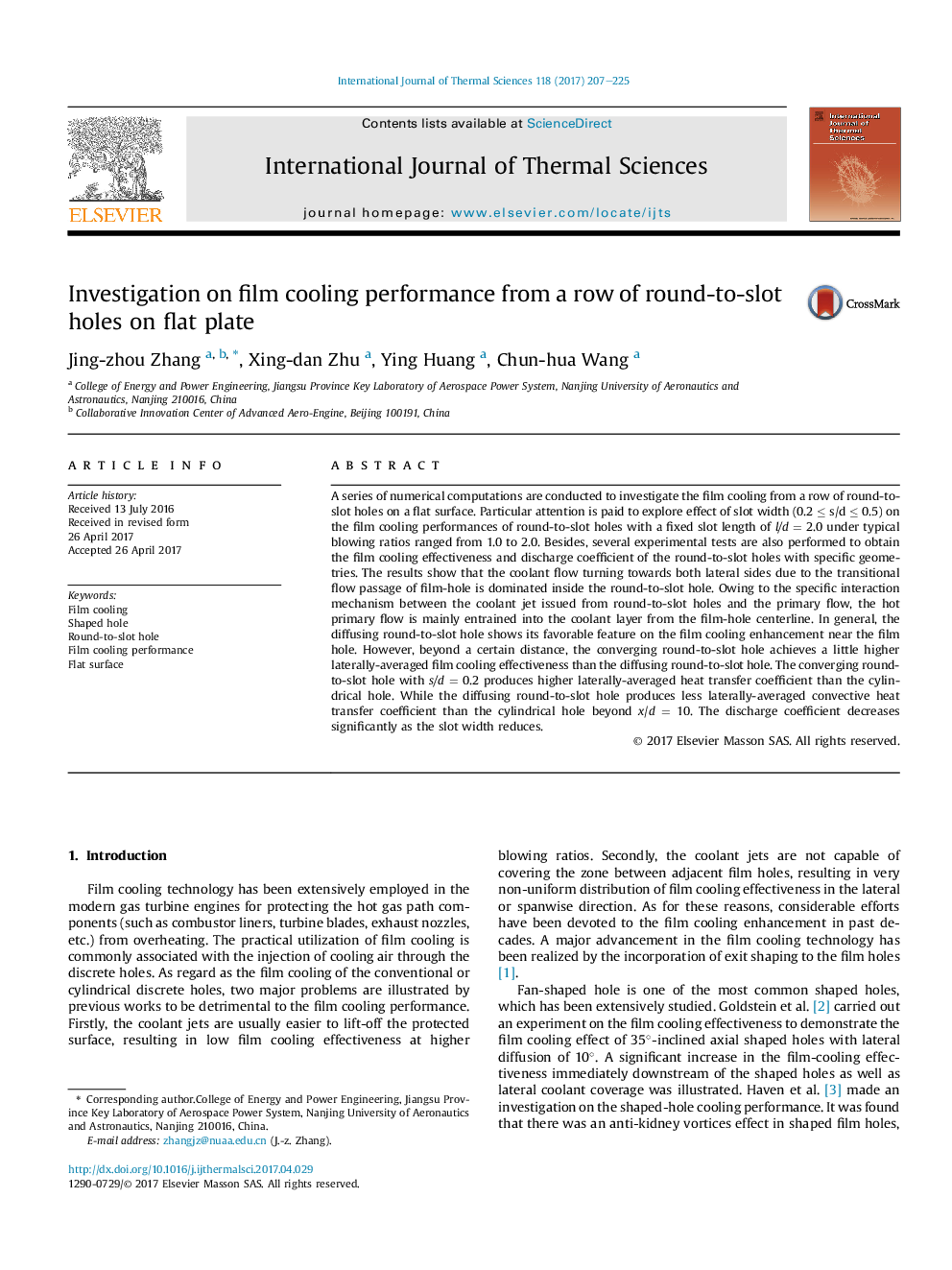| Article ID | Journal | Published Year | Pages | File Type |
|---|---|---|---|---|
| 4995273 | International Journal of Thermal Sciences | 2017 | 19 Pages |
Abstract
A series of numerical computations are conducted to investigate the film cooling from a row of round-to-slot holes on a flat surface. Particular attention is paid to explore effect of slot width (0.2 â¤Â s/d â¤Â 0.5) on the film cooling performances of round-to-slot holes with a fixed slot length of l/d = 2.0 under typical blowing ratios ranged from 1.0 to 2.0. Besides, several experimental tests are also performed to obtain the film cooling effectiveness and discharge coefficient of the round-to-slot holes with specific geometries. The results show that the coolant flow turning towards both lateral sides due to the transitional flow passage of film-hole is dominated inside the round-to-slot hole. Owing to the specific interaction mechanism between the coolant jet issued from round-to-slot holes and the primary flow, the hot primary flow is mainly entrained into the coolant layer from the film-hole centerline. In general, the diffusing round-to-slot hole shows its favorable feature on the film cooling enhancement near the film hole. However, beyond a certain distance, the converging round-to-slot hole achieves a little higher laterally-averaged film cooling effectiveness than the diffusing round-to-slot hole. The converging round-to-slot hole with s/d = 0.2 produces higher laterally-averaged heat transfer coefficient than the cylindrical hole. While the diffusing round-to-slot hole produces less laterally-averaged convective heat transfer coefficient than the cylindrical hole beyond x/d = 10. The discharge coefficient decreases significantly as the slot width reduces.
Keywords
Related Topics
Physical Sciences and Engineering
Chemical Engineering
Fluid Flow and Transfer Processes
Authors
Jing-zhou Zhang, Xing-dan Zhu, Ying Huang, Chun-hua Wang,
